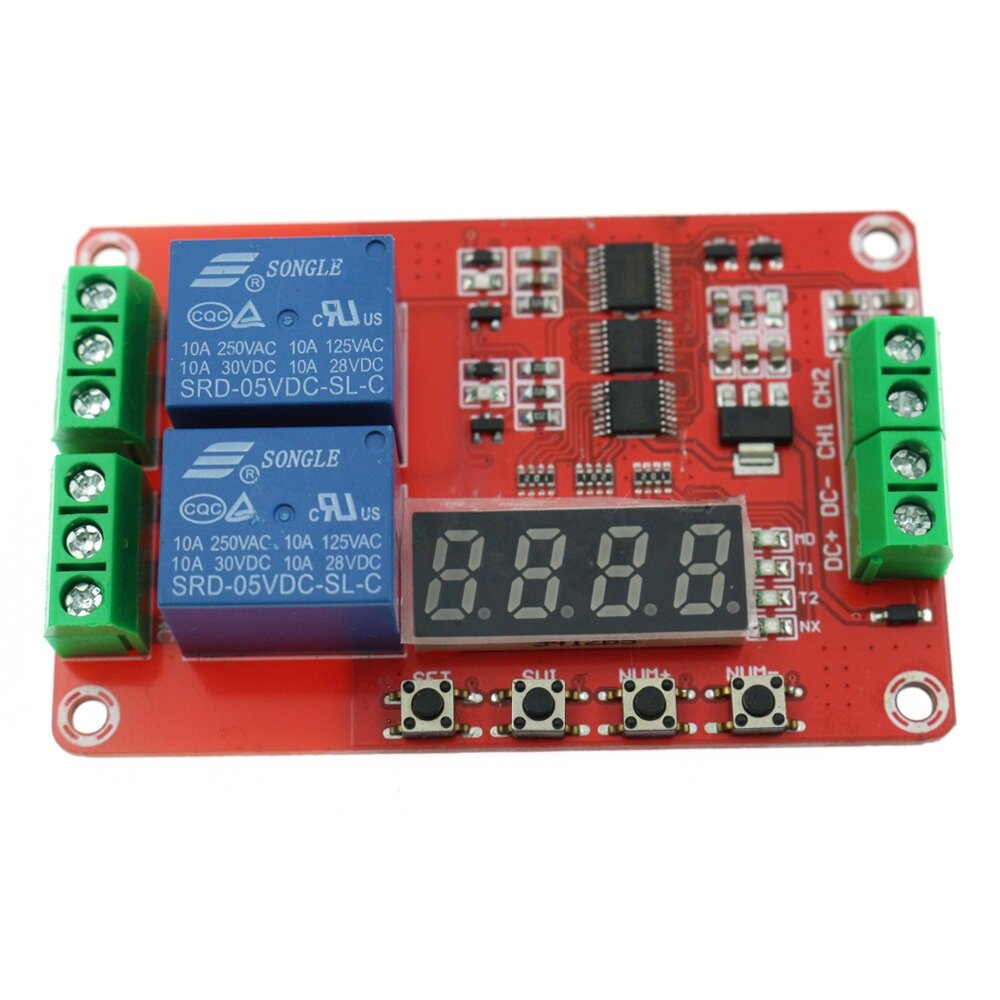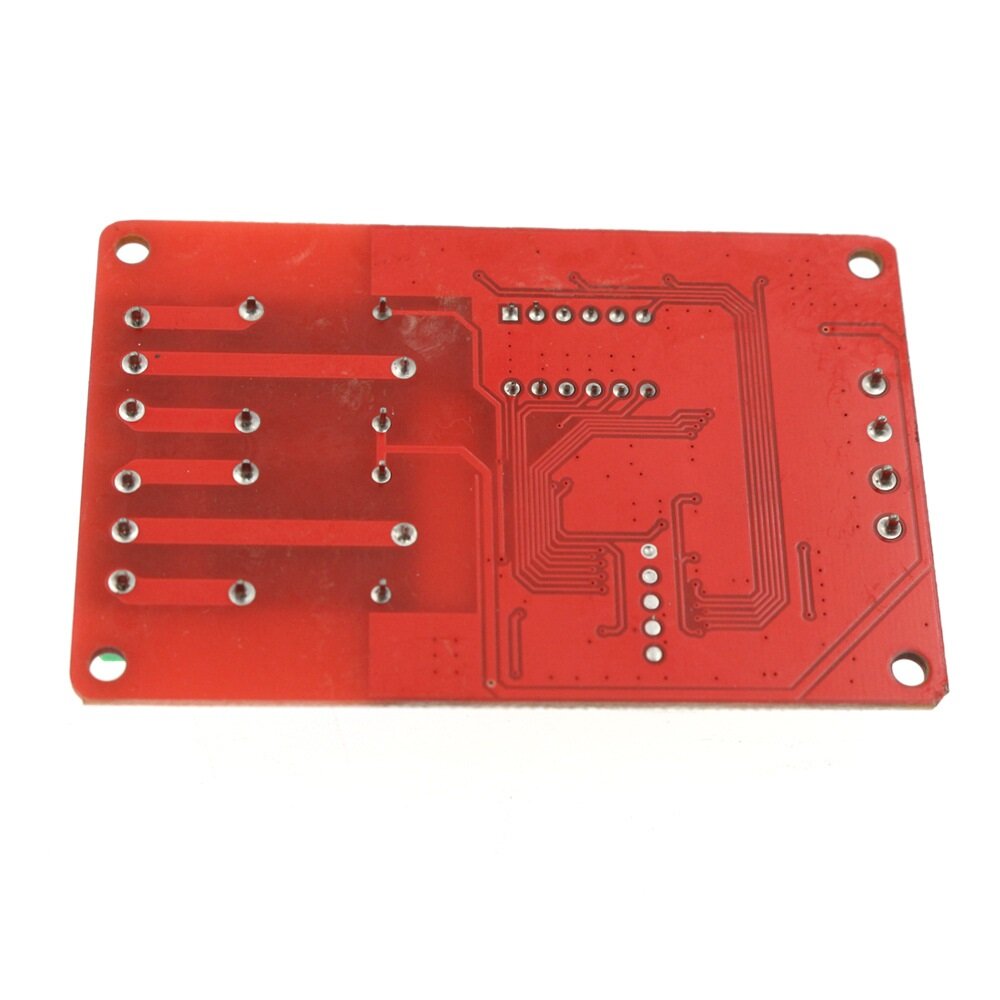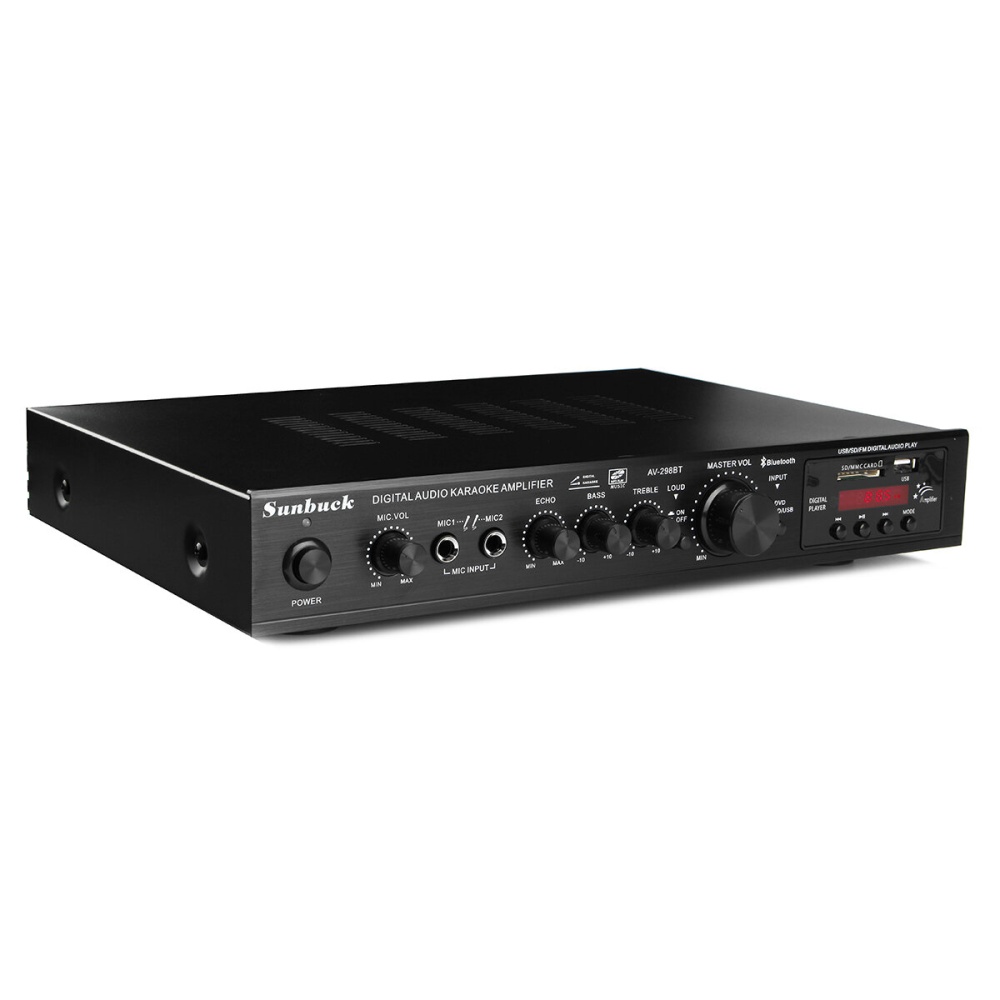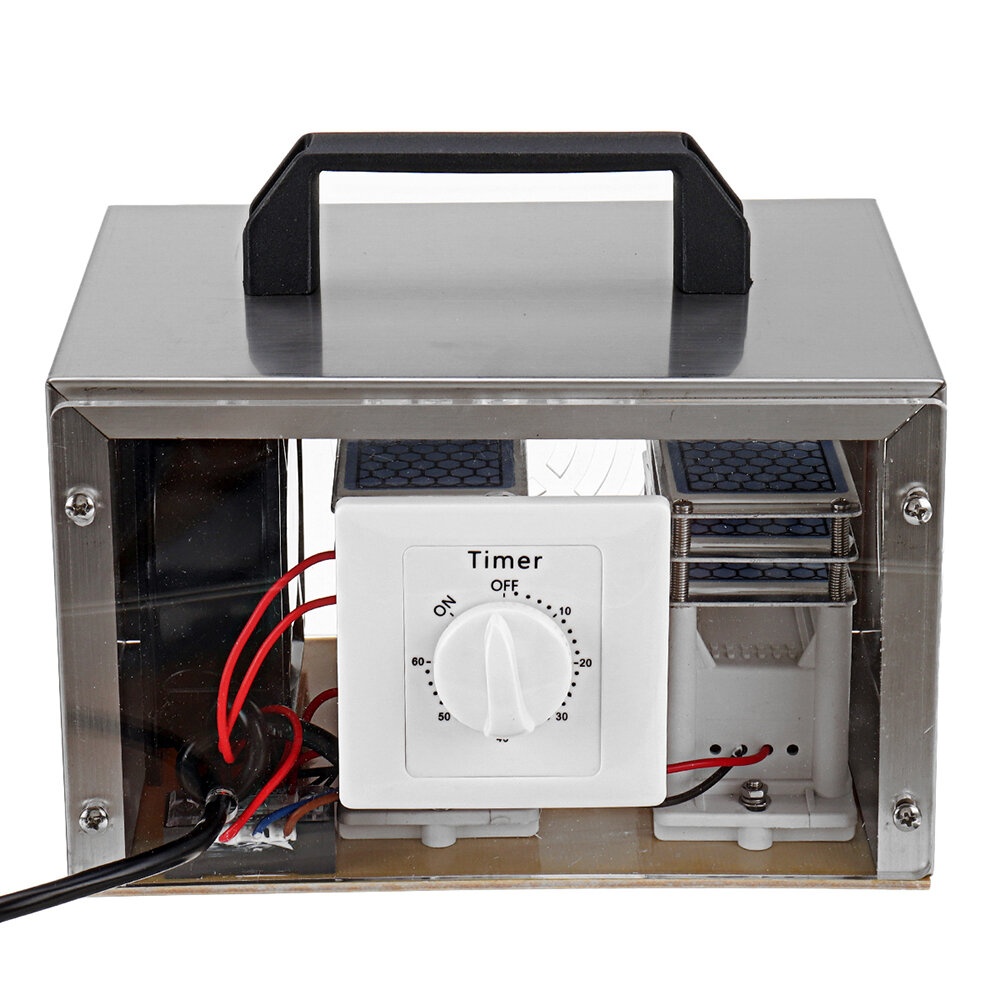Description
Module function:The user can select one of the following 20 functions by pressing the button and display, and can set and save the function parameters, and also view the parameters of the current function. The time parameter setting is adjustable by 0.1 second at minimum, and the precision is better than 0.01 second. Instructions for setting up can be obtained from your dealer. Tips: Function 1-8 is powered on automatically, function 9-18 requires a high level pulse signal (high level duration is not shorter than 20ms, the same below) triggers the start, function 19-20 requires a continuous high level . Function 1:Timing pull-in: After power-on, the delay T1 time relay is closed, T1 is adjustable between 0.1 seconds and 270 hours, and a high-level pulse signal is sent to the CH1 interface, repeating the above functions; Function 2:Timing disconnection: the relay is closed when power is on, the relay is disconnected when the time delay T1, T1 is adjustable between 0.1 seconds and 270 hours, and a high-level pulse signal is sent to the CH1 interface, and the above functions are repeated once; Function 3:Timing pull-in and then disconnect: After power-on, the relay does not pick up first. After the delay time T1 arrives, the relay pulls in; after the pull-in time T2 arrives, the relay is disconnected, and the delay time T1 and T2 is between 0.1 seconds and 270 hours. Adjustable between the two, give the CH1 interface a high-level pulse signal, repeat the above functions; Function 4:Timing disconnection and re-sucking: After power-on, the relay immediately picks up, the relay is disconnected after the delay time T1 arrives; the relay is closed after the disconnection time T2 arrives, and the delay time T1 and T2 is between 0.1 second and 270 hours. Adjustable, give the CH1 interface a high-level pulse signal, repeat the above functions; Function 5:Infinite loop timing mode 1: After power-on, the relay does not pick up first. After the delay time T1 arrives, the relay pulls in; after the pull-in time T2 arrives, the relay turns off, and then repeats the above state. The delay time T1 and T2 are at 0.1. Adjustable between seconds and 270 hours, give a high-level pulse signal to CH1 interface, you can restart the above functions; Function 6:Infinite loop timing mode 2: After power-on, the relay will immediately pull in. After the delay time T1 arrives, the relay will be disconnected. After the disconnection time T2 arrives, the relay will pick up and then repeat the above state. The delay time T1 and T2 are 0.1 seconds. Adjustable between -270 hours, give a high-level pulse signal to CH1 interface, you can restart the above functions; Function 7:Limited cycle timing mode 1: On the basis of function 5, increase the cycle number function. At this time, T1 and T2 are adjustable between 0.1 seconds and 9999 seconds, and the cycle number NX is adjustable between 1-9999 times for the CH1 interface. A high level pulse signal can restart the above functions; Function 8:Limited cycle timing mode 2: On the basis of function 6, increase the cycle number function. At this time, T1 and T2 are adjustable between 0.1 seconds and 9999 seconds, and the cycle number NX is adjustable between 1-9999 times to the CH1 interface. A high level pulse signal can restart the above functions; Function 9:Self-locking relay mode: A high-level pulse signal is sent to the relay CH1 interface, the relay is closed, and a high-level pulse signal relay is turned off. Function 10:Trigger relay mode: A high level signal is sent to the relay CH1 interface, the relay is closed, the high level disappears, and the relay is disconnected. Function 11:Trigger timing pull-in: After the power-on, the relay does not operate, give a high-level pulse signal to the CH1 interface, delay the T1 time relay to pull in, T1 is adjustable between 0.1 seconds and 270 hours, repeating a high level to the CH1 interface. Pulse signal, repeating more than one function; Function 12:Trigger timing disconnection: the relay does not operate after power-on, give a high-level pulse signal to the CH1 interface, the relay pulls in, the delay T1 time relay is disconnected, T1 is adjustable between 0.1 seconds and 270 hours, repeating to the CH1 interface A high-level pulse signal repeats the above functions; Function 13:The trigger timing is closed and then disconnected: the relay does not operate after power-on, and a high-level pulse signal is sent to the CH1 interface. After the delay time T1 arrives, the relay is closed; after the pull-in time T2 arrives, the relay is disconnected, and the delay time T1 and T2 can be adjusted between 0.1 seconds and 270 hours, repeating a high level pulse signal to the CH1 interface, repeating the above functions more than once; Function 14:The trigger timing is disconnected and re-supplied: the relay does not operate after power-on, and a high-level pulse signal is sent to the CH1 interface, the relay immediately picks up, the relay is turned off after the delay time T1 arrives, and the relay is closed after the disconnection time T2 arrives. The delay time T1 and T2 are adjustable between 0.1 second and 270 hours, and a high-level pulse signal is repeatedly sent to the CH1 interface, and the above functions are repeated once; Function 15:Infinite loop timing mode 1: After the power is turned on, the relay does not operate, and a high-level pulse signal is sent to the CH1 interface. After the delay time T1 arrives, the relay is closed; after the pull-in time T2 arrives, the relay is turned off, and then the above state is repeated. When the time T1 and T2 are adjustable between 0.1 second and 270 hours, repeating a high level pulse signal to the CH1 interface, the above functions can be restarted; Function 16:Infinite loop timing mode 2: After the power is turned on, the relay does not operate, and a high-level pulse signal is sent to the CH1 interface. The relay immediately picks up, the relay is turned off after the delay time T1 arrives; the relay is closed after the disconnection time T2 arrives, and then the relay is closed. Repeat the above state, the delay time T1 and T2 can be adjusted between 0.1 second and 270 hours, repeating a high level pulse signal to the CH1 interface, the above functions can be restarted; Function 17:Limited cycle timing mode 1: On the basis of function 15, increase the cycle number function, at this time T1 and T2 are adjustable between 0.1 seconds and 9999 seconds, and the cycle number NX is adjustable between 1-9999 times, repeating to CH1 A high-level pulse signal on the interface can restart the above functions; Function 18:Limited cycle timing mode 2: On the basis of function 16, increase the cycle number function. At this time, T1 and T2 are adjustable between 0.1 seconds and 9999 seconds. The cycle number NX is adjustable between 1-9999 times, and is repeated to CH1. A high-level pulse signal on the interface can restart the above functions; Function 19:Conditional loop mode 1: When the power is turned on, the relay is disconnected, and a high level signal is sent to the CH1 interface. After the delay time T1 arrives, the relay is closed; after the pull-in time T2 arrives, the relay is disconnected, as long as the high level of the CH1 port does not disappear. The module will repeat the above actions, T1 and T2 are adjustable between 0.1 seconds and 270 hours. If the high level signal of the CH1 interface disappears, the relay will be immediately disconnected and the function will be reset. Function 20:Conditional loop mode 2: The relay is disconnected at power-on, a high level signal is sent to the CH1 interface, the relay is closed, the relay is turned off after the pull-in time T1 arrives, and the relay is closed after the disconnection time T2 arrives, as long as the CH1 port is high-powered The flat will not disappear, the module will repeat the above action, the extension T1 and T2 can be adjusted between 0.1 seconds and 270 hours. If the high level signal of the CH1 interface disappears, the relay will be immediately disconnected and the function will be reset.
Module interface:
Module control terminal: 3-wire interface, all interfaces have terminal blocks for user convenience1. DC+: DC power supply positive (5V, 12V and 24V modules are available)2. DC-: DC power supply negative3. CH1: input detection interface 1, active high





